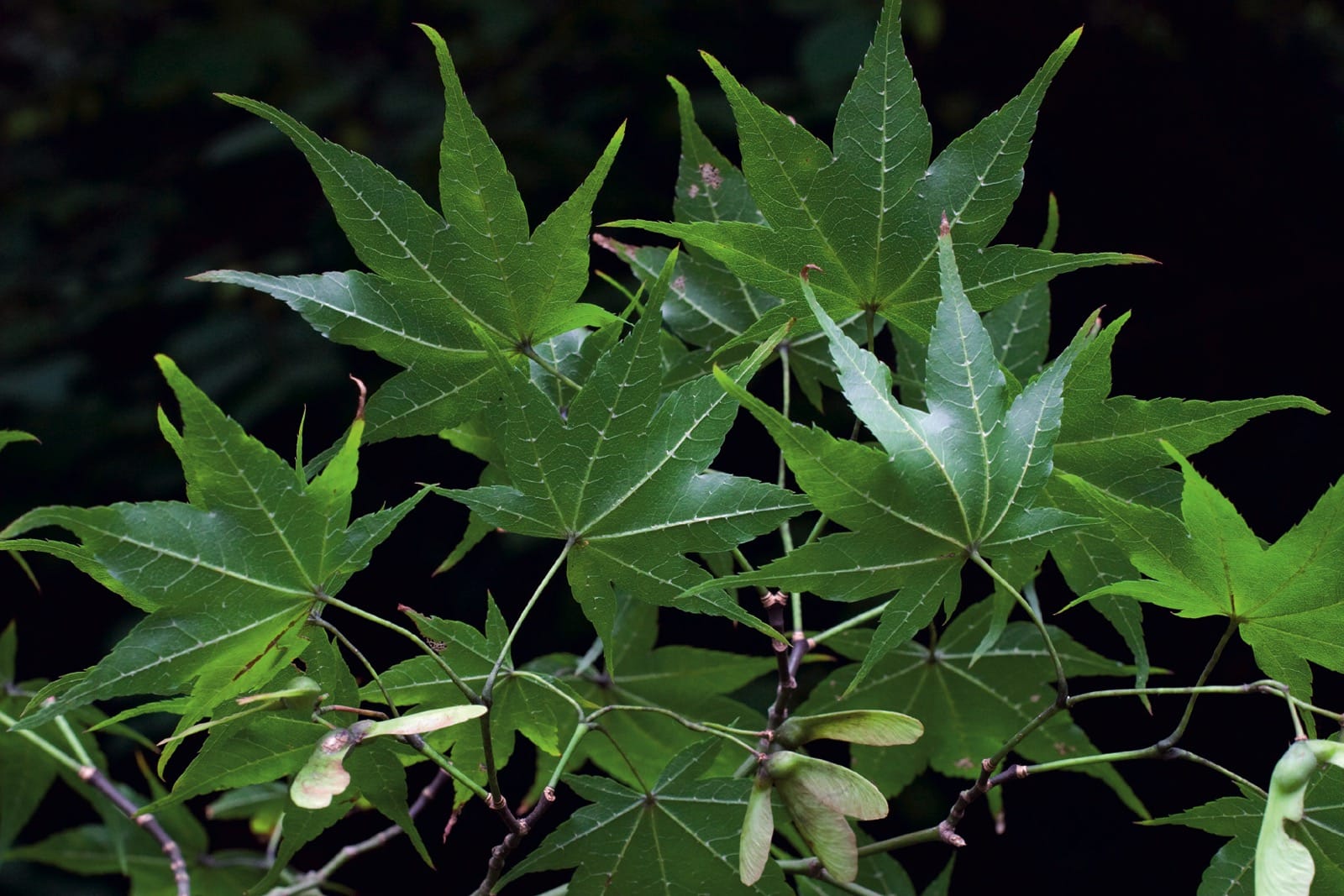Acer ceriferum
Sponsor
Kindly sponsored by
a member of the International Dendrology Society
Credits
Article from New Trees by John Grimshaw & Ross Bayton
Recommended citation
'Acer ceriferum' from the website Trees and Shrubs Online (treesandshrubsonline.
Genus
- Acer
- Sect. Palmata, Ser. Palmata
Synonyms
- A. robustum Pax
Other taxa in genus
- Acer acuminatum
- Acer amplum
- Acer argutum
- Acer barbinerve
- Acer buergerianum
- Acer caesium
- Acer calcaratum
- Acer campbellii
- Acer campestre
- Acer 'Candy Stripe'
- Acer capillipes
- Acer cappadocicum
- Acer carpinifolium
- Acer 'Cascade'
- Acer caudatum
- Acer chapaense
- Acer chienii
- Acer circinatum
- Acer cissifolium
- Acer × conspicuum
- Acer cordatum
- Acer coriaceifolium
- Acer × coriaceum
- Acer crataegifolium
- Acer davidii
- Acer diabolicum
- Acer distylum
- Acer divergens
- Acer duplicatoserratum
- Acer elegantulum
- Acer erianthum
- Acer 'Esk Flamingo'
- Acer fargesii
- Acer fenzelianum
- Acer flabellatum
- Acer forrestii
- Acer franchetii
- Acer × freemanii
- Acer fulvescens
- Acer 'Gimborn'
- Acer ginnala
- Acer glabrum
- Acer 'Gold Coin'
- Acer granatense
- Acer grandidentatum
- Acer griseum
- Acer heldreichii
- Acer henryi
- Acer × hillieri
- Acer hookeri
- Acer hyrcanum
- Acer japonicum
- Acer kawakamii
- Acer komarovii
- Acer laevigatum
- Acer laurinum
- Acer laxiflorum
- Acer lobelii
- Acer longipes
- Acer macrophyllum
- Acer mandshuricum
- Acer maximowiczianum
- Acer maximowiczii
- Acer metcalfii
- Acer miaotaiense
- Acer micranthum
- Acer 'Mindavi'
- Acer 'Minorient'
- Acer miyabei
- Acer miyabei × campestre
- Acer monspessulanum
- Acer morifolium
- Acer 'Mozart'
- Acer oblongum
- Acer obtusifolium
- Acer okamotoanum
- Acer oliverianum
- Acer opalus
- Acer orientale
- Acer palmatum
- Acer papilio
- Acer pauciflorum
- Acer pectinatum
- Acer pensylvanicum
- Acer pentaphyllum
- Acer pentapotamicum
- Acer pictum
- Acer pilosum
- Acer pinnatinervium
- Acer platanoides
- Acer platanoides × amplum
- Acer platanoides × truncatum
- Acer × pseudoheldreichii
- Acer pseudoplatanus
- Acer pseudosieboldianum
- Acer pubinerve
- Acer pycnanthum
- Acer rubescens
- Acer rubrum
- Acer rufinerve
- Acer saccharinum
- Acer saccharum
- Acer sempervirens
- Acer 'Serpentine'
- Acer serrulatum
- Acer shenkanense
- Acer sieboldianum
- Acer sikkimense
- Acer 'Silver Cardinal'
- Acer 'Silver Ghost'
- Acer sinense
- Acer sinopurpurascens
- Acer spicatum
- Acer stachyophyllum
- Acer taronense
- Acer tataricum
- Acer tegmentosum
- Acer tenellum
- Acer tetramerum
- Acer tibetense
- Acer tonkinense
- Acer triflorum
- Acer truncatum
- Acer tschonoskii
- Acer turkestanicum
- Acer tutcheri
- Acer ukurunduense
- Acer velutinum
- Acer wardii
- Acer 'White Tigress'
- Acer wilsonii
- Acer × zoeschense
Shrub or tree 5–10 m. Branchlets purple to brown, slender and glabrous. Leaves deciduous, papery or membranous, 4–13 × 4–14 cm, palmately seven-lobed to nine-lobed, divided to one-quarter or one-third of the length, shiny green on both surfaces, largely glabrous, but with some silky hairs below, margins irregularly serrate, apex caudate to acuminate; petiole 4–5 cm long, glabrous; autumn colour red. Inflorescence terminal, corymbose with four to eight flowers. Flowers 5-merous, staminate or hermaphrodite; sepals ovate-oblong, purple, petals oblong to obovate, stamens eight, inserted outside the nectar disc. Samaras 2.2–6 cm long, yellowish green, wings spreading horizontally or obtusely. Flowering May, fruiting September (China). Van Gelderen et al. 1994, Xu et al. 2008. Distribution CHINA: Anhui, southern Gansu, Henan, western Hubei, southern Shaanxi, Shanxi, Sichuan, Zhejiang. Habitat Forests between 700 and 2000 m asl. USDA Hardiness Zone 5. Conservation status Not evaluated. Illustration NT71. Cross-reference K100. Taxonomic note Acer robustum Pax is a later homonym of A. robustum Opiz and must be replaced by the unfamiliar A. ceriferum (Xu et al. 2008).
Although Acer ceriferum was collected by Wilson in 1907 (no. 339), the oldest known specimen in cultivation seems to be a 35-year-old tree at Rogów, grown from Beijing Botanical Garden seed. Although hardy in these Zone 6 conditions it is very slow-growing (4 m) and has never flowered (Tumilowicz 2002). More recently it has become commercially available both in Europe and in North America. Plants are young and in consequence all rather small, but gardeners are likely to find this an interesting addition to the A. palmatum group. In the United Kingdom the best is probably a nice specimen at Blagdon (P. Gregory, pers. comm. 2007). The species differs from A. palmatum in having silky hairs on the undersides of its leaves, and more conspicuously in its much larger samaras. The leaves turn a purplish red in autumn, and flush yellowish red in spring.

